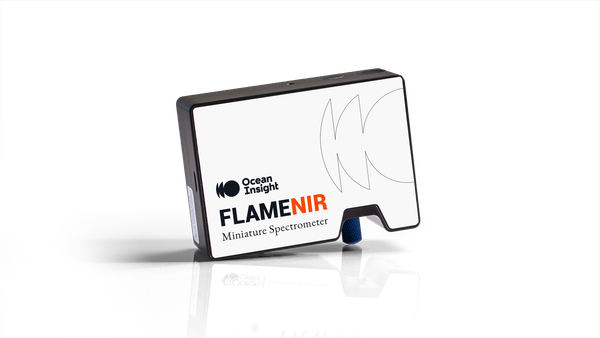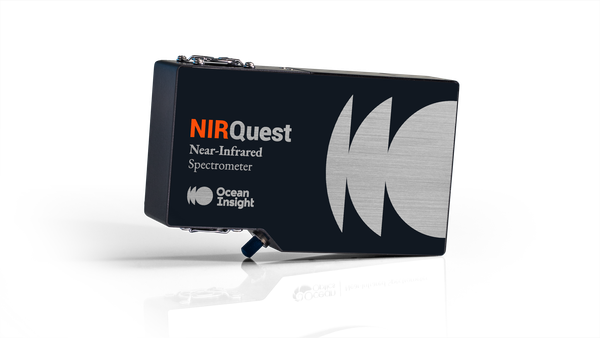- sales@intins.vn
- 02432045963
Plastic Classification for recycling
Nguyễn Khánh Linh - 21/12/2022
Plastic is a necessary material that can be seen everywhere in everyday life, but it is also the main cause of environmental pollution, giving people a positive and negative perception. That's why plastic recycling is of interest to many stakeholders, from researchers and manufacturers to environmentalists and regulators.
This article describes the application of spectroscopy to the plastics recycling process to identify and classify various plastic materials.
※ Background
Techniques such as NIR spectroscopy or Raman analysis are effective in identifying plastics during recycling because they provide useful information about material properties, including chemical composition. Incorporating spectroscopy into the recycling process complements and simplifies sorting in existing processes.
In the near-infrared (NIR) wavelength range (>800 nm), polymers exhibit strong and distinct intrinsic spectral features, which are closely related to the recycling codes of everyday plastics (Figure 1). Since most of the coded plastics have distinct spectral properties in the NIR, spectroscopy can be incorporated into the plastics classification process. In addition, when using NIR spectroscopy, there is almost no sample preprocessing, and the settings can be flexibly changed and customized according to the situation.

Figure 1. NIR spectrum of some recycled plastics
In some cases, Raman spectroscopy is used to identify unknown compounds. Indeed, under the right conditions (sufficient signal level, application of methods to mitigate the interference of fluorescence, etc.), Raman is very effective in classifying plastics.
Raman and NIR spectroscopy are effective for identifying non-colored and colored plastics, but neither method is suitable for identifying black polymers. This is because carbon black absorbs all Raman excitation laser light and all light in the NIR region. (A method using mid-infrared spectroscopy to identify black polymers is described in the following paper; Becker, W., Sachsenheimer, K. And Klemenz, M., “Detection of Black Plastics in the Middle Infrared Spectrum (MIR) Using Photon Up-Conversion Technique for Polymer Recycling Purposes, “ Polymers (Basel). 2017 Sep; 9(9): 435. )
※Diffuse reflectance measurement using Flame-NIR+ spectrometers
The diffuse reflectance of several samples was measured to confirm the usefulness of the Flame-NIR + spectrometer for plastic classification.
1. PETE (polyethylene terephthalate), which is mainly used in the production of containers and clothing;
2. Thermoplastic LDPE (low-density polyethylene), PP (polypropylene),
3. PS (polystyrene) used in various packaging and containers
The Flame-NIR+ is a compact, high-performance spectrometer with an uncooled InGaAs array detector suitable for the wavelength range of 970-1700nm. Sensitivity is up to 6 times higher than previous models, providing lower detection limits and shorter integration times. Flame-NIR+'s small footprint and low power consumption make it ideal for integration into recycling processes.
To measure the sample, a Flame-NIR+ was used under the conditions of a high power tungsten halogen light source, a 600 µm reflection probe and a diffuse reflection method. (Software used: OceanView, integration time: 6ms, scans to average: 50, boxcar: 1)
Data were collected in absorbance mode in OceanView software and expressed as reflectance spectrum log(1/R) with R, the reflectance of the sample. Representing the reflectance spectrum as log(1/R) is a more intuitive way to analyze the reflectance spectrum because the concentration can be viewed as a scale for the intensity of the signal.
Spectra were initially checked with Flame-NIR+ without baseline correction. Subsequent baseline correction was performed by subtracting the reflectance at 1303 nm from every point in the spectrum to easily distinguish the spectral features for each sample. This process is a data processing step to compensate for errors in signal strength that may occur due to fiber movement or other issues, making it easier to see differences in the spectrum of each sample.
※ Diffuse reflectance measurement using NIR Quest+ spectrometer
Another spectrometer, a thermoelectrically cooled InGaAs array detector capable of viewing the wavelength range of 900-1700 nm, was used for measurements using the NIRQuest+1.7 (Figure 2). Wavelength ranges of 900-2200nm and 900-2500nm are also available. The NIRQuest+1.7 spectrometer (900-1700nm) is a highly sensitive product with excellent thermal stability and is suitable for use in processes.

Figure 2: NIR Quest+ using for Plastic recycling
The NIR Quest+ spectrometer has been engineered for high-sensitivity performance with low detection limits and clear spectra in the longer wavelength range for diffuse reflectance measurements. Compared to Flame-NIR+, NIR Quest+ is more sensitive and provides a spectrum at longer NIR wavelengths (>1700 nm).
Plastic samples (PET and PP) were measured under the conditions of a high-power tungsten halogen light source, a 600 µm reflection probe, and a diffuse reflection method, identical to the experimental conditions conducted with Flame-NIR+ above. (Software used: OceanView, integration time: 5 ms, scans to average: 25, boxcar: 1) Measurement results were expressed as % reflectance (Figure 6).
※Use of NIR data
A good calibration model can be built using NIR spectra, but it is difficult to predict materials outside of the calibration model. Indeed, NIR spectra provide a wealth of information about a sample, provided you have a tool capable of extracting the data. For example, if NIR data collected in principal component analysis, one of the chemical analysis methods, is applied, the spectrum display function can be used to group and classify samples by type.
In the plastics classification process, the ability to achieve effective classification with NIR reflectance spectra also benefits Ocean Intelligence machine learning algorithms. By applying Ocean Intelligence to automated recycling sorting processes, polymers can be separated more efficiently while minimizing possible errors during the sorting process. (Anything that is not properly sorted is classified as waste and must be recycled again.)
※ Conclusion
As NIR spectroscopy and machine learning continue to advance, when applied to the recycling industry, plastic sorting processes can be streamlined, cost-efficient and contribute to a more sustainable environment.



